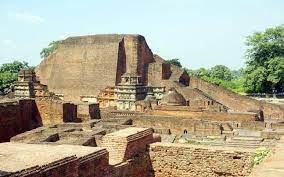News Highlight
The Telangana government’s Heritage Conservation Plan: efforts in protecting its heritage sites have created a buzz about heritage and culture.
Key Takeaway
- Five years after the Telangana government brought in a new Heritage Act and scrapped protection for dozens of heritage sites, it appears to have changed tack.
- The Minister for Municipal Administration and Urban Development is not just inaugurating flyovers and other civic projects but is talking about the conservation and preservation of heritage sites.
- The government’s demonstration of interest goes beyond rhetoric; significant sums of money are being spent on heritage site restoration.
- In addition, restoration work on the Bansilalpet stepwell and the Moazzam Jahi Market from 1935 reportedly cost 16 crores and 2.6 crores, respectively.
- The Municipal Administration and Urban Development department is announcing and managing these projects.
- Ramappa temple (13th-century temple) near Warangal was given a UNESCO World Heritage site.
- Furthermore, the Golconda stepwells and Domakonda Fort were winners of UNESCO’s Asia-Pacific cultural heritage conservation awards in 2022.
Cultural Heritage
- About
- Firstly, the physical or tangible cultural legacy includes artworks.
- These are often divided into moveable and immovable heritage groups:
- Objects such as structures, landmarks, and monuments are considered immovable heritage.
- Furthermore, books, documents, transportable artworks, music, and other artefacts are examples of moveable heritage.
- Significance of Preserving Cultural Heritage
- Economic significance
- Firstly, modern economies need solid cultural industries.
- Cultural landmarks, amenities, and artistic expressions increase tourism, support livelihoods, and draw capital.
- Economic significance
- Historical-Social significance
- The preservation of history, knowledge creation and creativity promotion are some of the culture’s non-economic benefits.
Issues Related to Heritage Management in India
- Outdated Mechanism of Excavation and Exploration
- Geographic Information Systems and Remote Sensing are infrequently used in exploration because of the prevalence of old-fashioned methods.
- Lack of Centralised Database for Heritage Sites
- Firstly, India does not have a comprehensive national-level database that breaks down the distribution of cultural structures by state.
- Although there are reportedly more than 4000 heritage towns and cities in the nation, the Indian National Trust for Art & Cultural Heritage (INTACH) has only inventoried roughly 60,000 buildings in about 150 localities.
- Lack of Centre-State Coordination
- Even though India has some of the top institutions for heritage management and protection, such as the Indian National Trust for Art & Cultural Heritage (INTACH).
- Additionally, a multidisciplinary approach to heritage conservation is inadequate due to a lack of cooperation between the centre and the state.
- Developmental Activities Prevail Over Heritage Conservation
- Construction projects have destroyed several archaeologically significant sites in India.
Way Forward
- The utilisation of New Technologies
- Firstly, in 2015, ASI adopted an excavation policy.
- This policy has to be updated to reflect the evolving circumstances brought on by technological innovation.
- Furthermore, new technology like Photogrammetry & 3D Laser Scanning, LiDAR and Satellite Remote Sensing Surveys should be used for documentation, surveys, excavation, and conservation works.
- Integrating heritage-city planning
- All significant infrastructure projects should consider the results of the Heritage Impact Assessment.
- Heritage Tourism and Education
- Firstly, India can successfully protect its cultural and historic riches while fostering local economies by creating jobs, new enterprises, and tax money for the government.
- This is done by promoting heritage tourism.
- Innovative Ways to Increase Engagement
- Cultural programmes should be held at monuments that don’t receive a lot of visitors and have no obvious cultural or religious connotations to achieve the following two goals:
- Raising awareness of the related intangible heritage
- Finally, increasing the number of visitors to such sites
- Cultural programmes should be held at monuments that don’t receive a lot of visitors and have no obvious cultural or religious connotations to achieve the following two goals:
Pic Courtesy: India Today
Content Source: The Hindu



